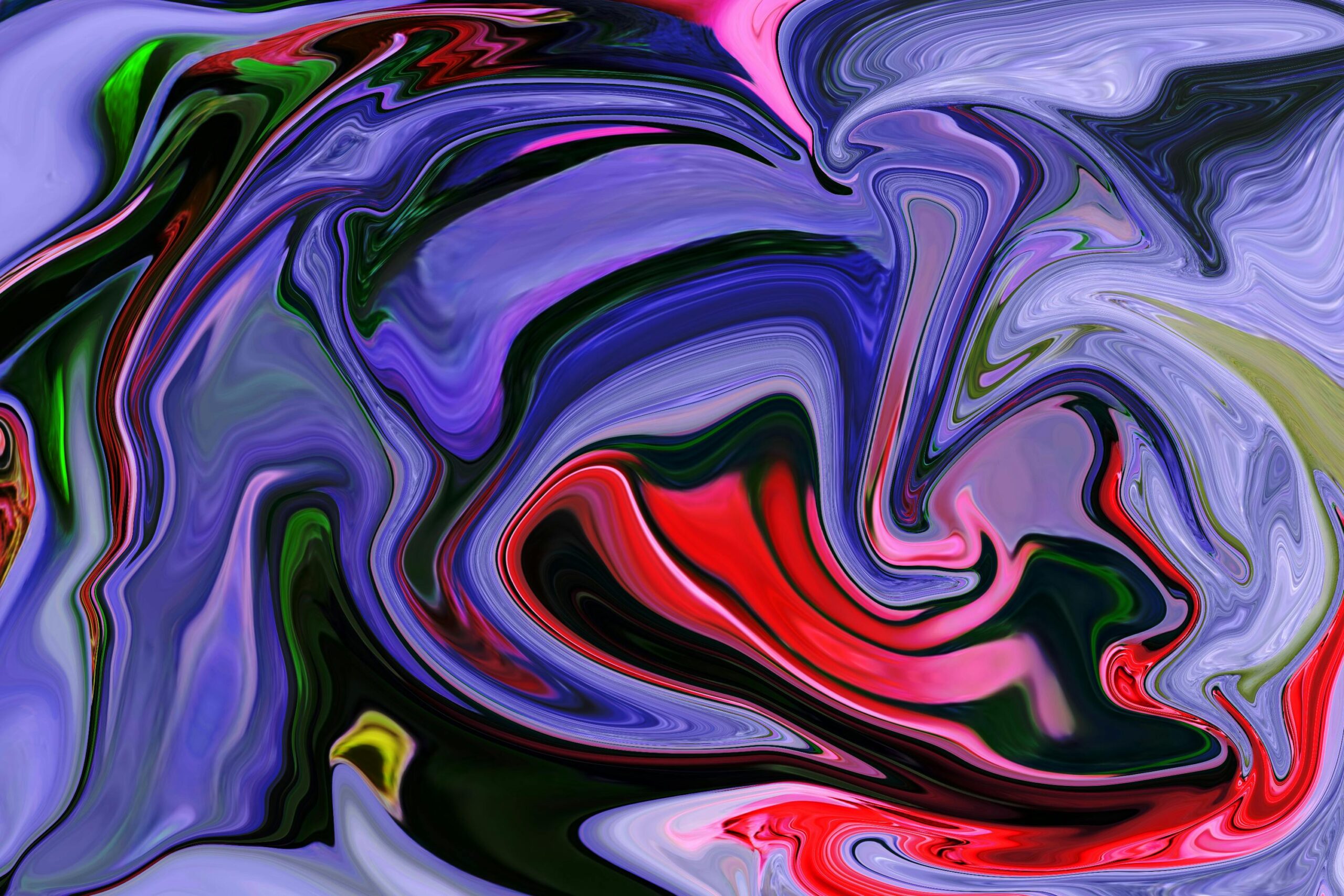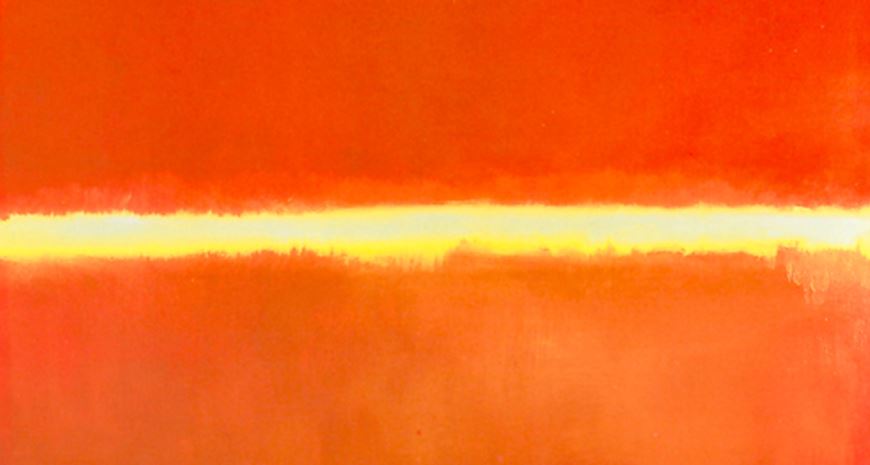Abstract Art Therapy And 10 Master Styles
Before I explore abstract art therapy, let’s understand its essence. The abstract art movement took shape in the early 20th century. Artists broke free from the constraints of realism in the physical world. Experimenting with creating familiar objects, abstract artists applied art—colour, shape, line, texture, and form—to express emotions, ideas, and personal experiences.
Consequently, viewers engage with the artwork personally, interpreting its ambiguity through their unique perspectives and feelings. Is it not beautiful? Abstract art leaves interpretation open to infinite possibilities. Therefore. it encourages self-discovery and reflection. This blog looks at the healing power of abstract art therapy, its types and its effect on the human psyche.
Why Abstract Art Therapy Heals?
Here are some key reasons why abstract art therapy heals:
Ancient Roots to Modern Magic of Healing: Creative expression of art, music, and dance has always held healing powers. Therefore, the power of abstract art therapy comes from the age-old rituals rooted in creative expression.
Beyond the Canvas: Abstract art is an expression that broke free from tradition. Therefore, giving artists a new language of colours, shapes, and marks to express themselves!
Texture and Depth: In abstract art, texture, depth, and colour are powerful tools for conveying emotions and ideas.
Interpretation Matters: Abstract art invites viewers to interpret and understand its meaning. No single “right” answer makes the experience personal and potentially therapeutic.
Not Just a Picture: Abstract art ignites self-discovery and emotional release. Therefore, helps you process feelings, explore your inner world, and find new perspectives.
The Evolution of Abstract Art Paintings

Abstract art is essentially, an outcome of the desire to break free from traditional art styles and do something new! This revolutionary shift started after the Renaissance and continued through the Victorian era. Moreover, artists started questioning old ways of thinking and creating.
Also the Post-Impressionism art period was other pillar towards abstraction. Moreover, it developed with the rise of Modernism and Post-Modernism. Consequently, global influences and the rise of technology in the 20th century ignited movements like Surrealism, Dadaism, Cubism, and Fauvism with their own take on abstract art.
The new abstract styles evolved using simplified shapes having a deeper meaning. Renowned artists like Picasso, Mondrian, Kandinsky, Gris, and Hepworth during the period showed their unique abstract styles, that reflected their personalities.
Continue reading to explore the different types of abstract art and how abstract art therapy is healing.
1. Drip and Splash
Jackson Pollock experimented with drip paintings and took abstract art to a new level. Pollock’s technique, splattered and dripped paint, and gave his canvases a lively and energetic feel.
This style focuses on loose, quick brushstrokes and the artist applied paint in unconventional ways. Moreover, Pollock did not have a specific focal point for his canvas reelected “all-over” paintings. However, there’s often a subtle flow from left to right.
2. Color Blocking
 American artist Mark Rothko, unlocked the emotional power of abstract art with his huge “Color Field” paintings. His unique use of blocks of colour without any people or landscapes changed what abstract art could be.
American artist Mark Rothko, unlocked the emotional power of abstract art with his huge “Color Field” paintings. His unique use of blocks of colour without any people or landscapes changed what abstract art could be.
This colour block art was a major contribution to American art in the late 1940s and early 1950s. Viewers start to see movement, pulsing, and a mysterious light in his paintings. As if you are travelling to another world.
3. Marbling
Marbling goes back to the 12th century in Japan. Moreover, it is referred to as Suminagashi, or “ink-floating,”. This is one of the first kinds of abstract art.
In the marbling technique, you float coloured ink on water or a thick liquid and then touch it with paper or fabric. Consequently, the ink swirls around and creates beautiful, colourful patterns. Did you know in marbling every piece is one-of-a-kind and you can’t make the same design twice?
Earlier artists used Sumi-e inks. However, you can use watered-down acrylic paints to make their marbled abstract art.
4. Cubism
As the 20th century dawned, Pablo Picasso and Georges Braque started experimenting with new techniques defying traditional realistic perspectives, shading, and modelling. Consequently, they created a flat paintings-like surface using straight lines and simple colors. Also, these masters, showed all sides of an object at the same time. They had started a new abstract art style called Cubism. Also, Cubist paintings often show things broken up into geometric shapes.
Wassily Kandinsky a Russian took Cubism even further with geometric shapes like circles and triangles. However, his art was completely abstract and did not look anything real.
5. Line Art
Spanish artist Joan Miro developed a new style of abstract art painting that finds beauty in its simplicity. He combined simple line drawings and paintings with psychedelic surrealism subject matter, Moreover, the majority of his work was influenced by lithography. Consequently, his art had a graphic feel.
Miro, applied abstract line art with simple continuous lines to create forms and shapes to create a Surrealist fantasy. Therefore, contemporary artists today, find Miro’s style of abstract art unique in its simplicity.
6. Memphis
In 1981 a group of Italian designers, architects, and artists came up with Memphis style that uses geometric shapes, bright colours, and patterns. Moreover, this style of art borrows ideas from different styles, like Art Deco and even Kitsch. Memphis style is fun, energetic, and experimental.
7. Abstract Organic
Back in the 1950s, some artists, like Charles and Ray Eames, wanted to move away from traditional art. They started using natural materials, textures, and colors, and focusing on organic shapes. This led to a new style called abstract organic art. Think of smooth, flowing, and curvy shapes, along with calm, muted colors – that’s the hallmark of this style.
Abstract organic art is still popular today because of its simple elegance. You can find examples of it in the world’s most famous museums and art galleries.
8. Halftone
Halftone is a way of printing images that uses tiny dots to create the picture. Think of it like a newspaper photo – if you look closely, you’ll see it’s made up of lots of little dots.
Pop artists in the 1960s and 70s, like Andy Warhol and Roy Lichtenstein, used this halftone effect in their art. They wanted their paintings to look like they came from newspapers or billboards. They were interested in things like mass production, famous people, and how advertising, TV, radio, and magazines were changing culture. Pop art, with its use of halftone, helped create a brand new look for abstract art.
9. Surrealism
Surrealism strangely plays with reality. This art style mixes real objects in unexpected dreamlike combinations. In other words, you can think of it like a distorted version of reality. Salvador Dalí, René Magritte, and Frida Kahlo, renowned surrealists were inspired by ideas about the human mind. So, they went on to create this kind of art. Surrealistic art canvases place realistic-looking, bizarre, images together, similar to dream processes.
10. Abstract Relief and Sculpture
Abstract art encompasses abstract sculptures and reliefs. Therefore, Hepworth took inspiration from nature, the environment, and different forces for her abstract sculptures,. explored the connections between:
- Human figures and the landscape
- Colors and textures
- How people interacted individually and in groups
Hepworth experimented with metal, stone, and wood to create large, abstract sculptures. Today they are the best examples of Modernist sculpture from the 1930s to the 1960s.
Abstract Art Therapy: A Language Beyond Words
Art therapy uses creative expression as a means of communication and self-exploration. Moreover, trained therapists use various ways to guide individuals through the abstract art therapy process. Also, they use art to understand and process emotions. Art therapists may include painting, drawing, and sculpture, and abstract art holds a unique position within art therapy.
Abstract Art therapy helps individuals to communicate through visual creations. Also, individuals can use this creative process as a safe and accessible space for exploration. Moreover, it allows emotions to surface and be processed tangibly.
Abstract Art Therapy: A Window To Inner Potential
- Emotional Expression: An abstract artist expresses a wide range of emotions, from joy and serenity to anger and anxiety. Consequently, the process of creating abstract art can lead to profound self-discovery.
Therefore, when an individual engages with abstract art therapy, it can be a powerful channel for emotional release, allowing individuals to express pent-up emotions, anxieties, and stress and heal.
- Exploration of Ideas: Individuals who delve into Abstract art therapy can explore complex feelings including philosophical, spiritual, or intellectual concepts. Also, they can break the limitations of representing concrete objects.
- Universality: Abstract art therapy is universal and can go beyond cultural, geographical and linguistic barriers. Moreover, this art form can communicate to people from all walks of life. Therefore, abstract art therapy is a powerful form of healing.
- Reflection of the Times: Abstract art mirrors the social, political, and cultural context in which it is created. Therefore, capturing the spirit of an era in an evocative way.
- Fostering Reflection and Insight: Abstract art therapy is a means to help self-reflection. Artists or common individuals who create abstract works can examine their emotional responses leading to deeper self-awareness and valuable insights into one’s emotional state.
- Cultivating Calm and Reducing Stress: The creative process of abstract art therapy encourages healing and reduces stress and anxiety. Therefore, Abstract art, with its stress on fluid forms, vibrant colours and tactile textures, can create a calming atmosphere.
The Last Word
This blog must have given you a fair idea about Abstract art, abstract art therapy with its diverse forms and open interpretations. So, you now know how the art form offers a unique avenue for self-discovery and emotional release. Also, from the fluid patterns of marbling to the bold colour blocks of Rothko, each style offers a different lens through which to view and process our inner world.
Therefore, it is fascinating how a simple splash of colour or a carefully placed line can evoke such powerful feelings.
Therefore, you should delve deeper into the world of abstract art therapy, explore different styles, and discover which ones resonate most with you. Who knows, you’ll even be inspired to create your abstract masterpiece!
So, what type of abstract art speaks to you? Do share your thoughts and experiences in the comments below, and let’s continue this conversation about the healing power of abstract art therapy. You can contact me to know more.



